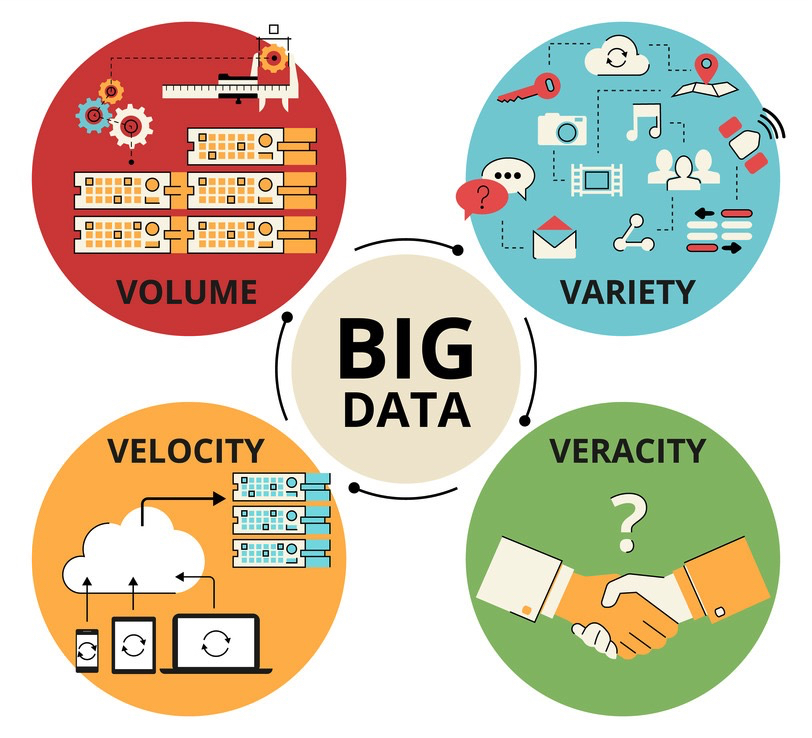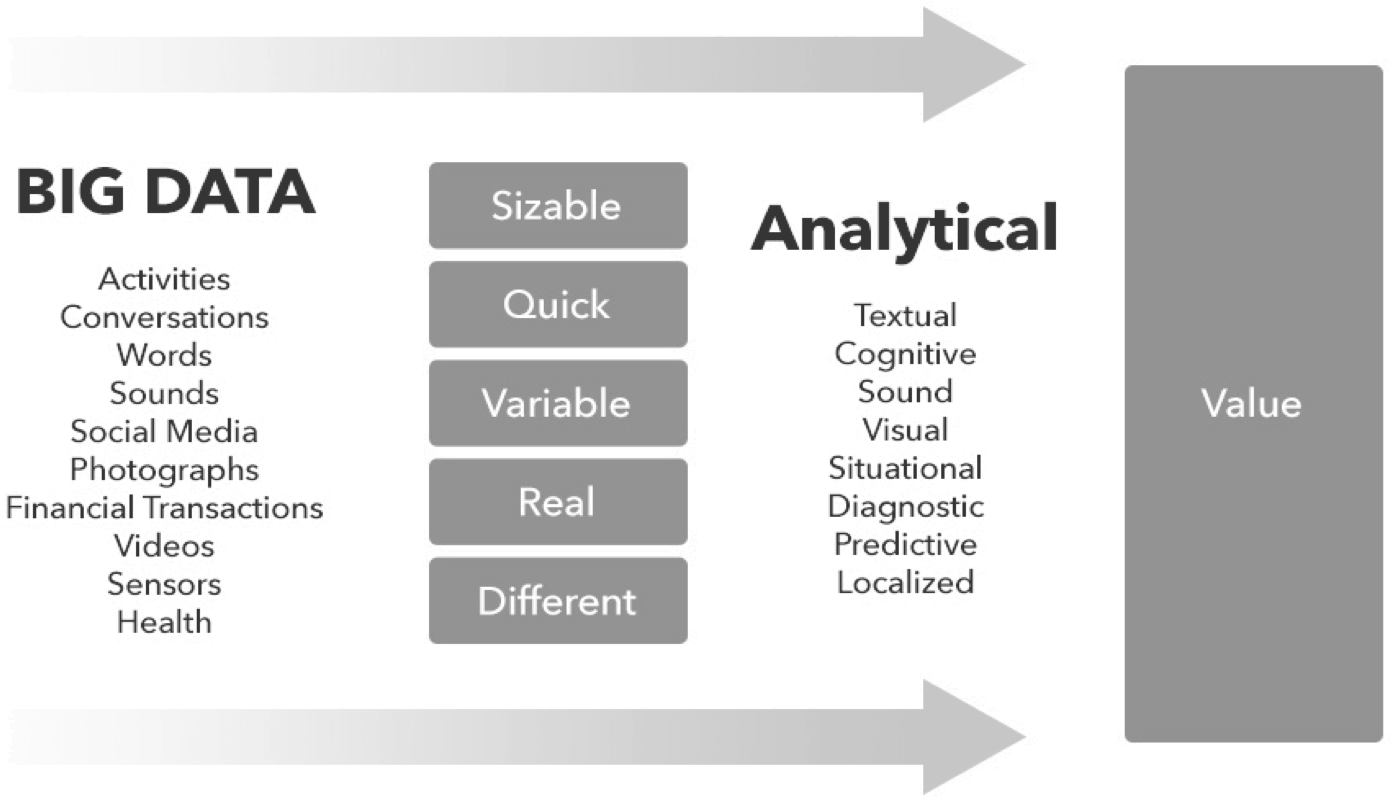Purpose
The purpose of this article is not to be technical or explain with utmost precision. It is for those who are fascinated by Data Science and need to understand concepts as a layman. Hence, I have spoken about Big Data & Behavioural Analytics in a way I would explain a friend who is not from my background.
What is Big Data?
You may wonder how complex could Big Data be, or maybe even intimidated by the fancy buzz word. However, It’s as simple as this:
“It is the ability to analyze and make use of large volumes of data that are dynamically increasing and evolving each second.“
The principal idea behind Big Data is that everything we do, will leave a digital trace behind that could or rather should be used for analysis. It is one of those things that is and will completely transform the way we do business and analyse things. Ideally, such analyses should benefit the consumer and the business that carries the analyses on the data generated by the consumers. For example, Company A can analyse consumer trends from data mined from various social media platforms and streamline their product offering and service accordingly.
“From the dawn of civilization until 2003, humankind generated five exabytes of data. Now we produce five exabytes every two days…and the pace is accelerating.” – Eric Schmidt
Sources of “BIG” Data?
This is by far the most fascinating part of Big Data i.e Data Sources. One cannot imagine the outburst of data collection from places unimaginable even 10 years ago. As we can see above, the data sources are
- Photos & Videos that are posted on Social Media Platforms like Facebook, Instagram & Snapchat etc.
- Conversation Data are basically audio files collected through platforms like Skype, Telecom Operators & etc.
- Internet of Things – this is a topic in itself. Simply put: IOT is the network of physical devices, vehicles, home appliances and other items embedded with electronics, software, sensors, actuators, and connectivity which enables these objects to connect and exchange data.
- Sensor Data – data being collected by all forms of sensors installed to collect automated streaming data.
- Activity Data – are data coming from our daily habits from devices like Smart Watches, Smart Phones & etc.
The FOUR V’s of Big Data
VOLUME
What makes data ‘big’ is the sheer volume that that is being generated each second. There has been an exponential growth each year and yet we have only begun collecting data since 2000. According to Thomson Reuters, in 2010 the world was “awash with over 800 exabytes of data and growing.”
“No one really knows how much new data is being generated, but the amount of information being collected is expected to grow by 50% each year”
VELOCITY
It is the frequency at which new data is generated and needs to be processed. Think about the millions of Tweets, SMS Messages, WhatsApp Messages, Facebook Status Updates, Instagram Posts, Credit Card Swipes are being carried out.
“Technology allows us now to analyse the data while it is being generated without ever putting it into databases.“
Variety
Traditionally we have been collecting structured data i.e. Bank Statements like date, amount and time. These kind of data easily fit into relational databases, however they make up only a fraction of the world’s data. With the advent of Social Media, structured data is augmented by unstructured data. These unstructured data comes from all possible means i.e. Social Media Platforms, Audio Files, Images, Videos, Web Pages, Log Files & etc.
“The primary objective of Big Data is to use technology to analyse these unstructured data and make sense out of it.”
Veracity
Simply put, Veracity refers to the trustworthiness of the data. Since more than 80% of the data collected are unstructured, there is less control on the quality of such data. Hence it is difficult to rely on the fact that the data is representative of what they want to achieve.
“Consumer data will be the biggest differentiator in the next two to three years. Whoever unlocks the reams of data and uses it strategically will win.”
– Angela Ahrendts
Transforming Big Data into Value Proposition
The most obvious and crucial foundation of the 4 V’s is to derive Value. The primary objective of every company or individual is to figure out whether or not the analysis done will generate any value for them i.e. a new product line, cost-cutting measure or maybe even a better customer satisfaction opportunity.
“War is 90% information.”
– Napoleon BonaparteWhat is Behavioral Analytics?
With unlimited access to data on Consumer Behavior & Trends, companies can leverage that to learn about their customers. Things like what makes a customer buy, what kind of products they prefer, why do they stay loyal to the brand and as well as their characteristics and purchasing habits. This can help companies improve their products, service & customer service which will eventually add Value and boosts Profits for the company.
“Getting started with behavioural analytics begins with identifying the customer actions that best align with your business goals.”
Use Case – MasterCard
Purpose:
With over 1.8 billion customers, Mastercard have placed themselves in a very unique position of being able to analyze the behavior of their customers in not only in their stores but also all retailers that have affiliated with them. The company has tied up with the Bangalore based Mu Sigma to collect and analyze data on shopper’s behavior and provide the insights it finds to other retailers so as to increase the overall efficiency
How do your customers spend when they’re not spending with you?
Knowing the answers can inform new marketing strategies for building retention and loyalty, encouraging repeat purchases, and earning greater wallet share. Mastercard supplies that intelligence, drawn from actual purchase behaviour of your customer base, aggregated to provide the insight you need.
Share your business problem or opportunity and Mastercard will work with you to design a data-driven approach and model to deliver the optimal business result. Some of the more popular offerings:
- Customer Loyalty Dynamics
- Loyalty Segmentation
- Behavioural Segmentation
- Advanced Buyer Segments
- Purchase Sequence Analytics
- Cross-Spend Analytics
- Store/Geographic Analytics
- Trade-Area Analytics
- Drive Time and Distance Analytics by Store Location
Use Case – Time Warner Cable
Purpose:
With tons of services like Hotstar, Hulu & Netflix competing for viewer’s attention, Time Warner prefers to collect data on how frequently customers tune in, the effect of bandwidth on consumer behavior, customer engagement and peak usage times in order to improve their service and increase profits.
The company also prefers to segment its customers for advertisers by relating the viewing habits with public data.
Use Case – Nestle
Purpose:
It is vital for companies like Nestle to handle difficult situations like handling Customer Complaints and PR crisis. Thanks to Social Media, it is now possible for such companies to interact with their target market directly. In order to do this and keep an eye on customer sentiments; Nestle has created a 24/7 monitoring centre to keep a track of all conversations about the company and its products on social media.
The company’s vision is to have an effective behavioral analysis in order to mitigate damage and build customer loyalty.
Use Case – McDonald’s
Purpose:
One of the most exciting companies who appear to be in the food business solely but are also in the real estate business. They track vast amounts of data in order to improve internal operations and boost customer experience. They have the most effective drive-thru experience that was built after understand customer behavior, the menu is designed in a way that customer does not gets confused and places their order as fast as possible thereby reducing wait times.
Use Case – Starbucks Coffee
Purpose:
Starbucks collects data on its customers purchasing habits and trends in order to localize and personalize their products and services. Using that they also personalize ads and coupon offers to the consumer’s mobile phone directly. The company also identifies trends indicating whether customers are losing interest in their products or not.
Understanding behavioral patterns, the company has been able to effectively open up localized versions of their coffee shop across the world i.e. China & IndiaApplications of Big Data
The applications of Big Data are ENDLESS !
We have only scratched the surface where we have only started seeing the beginnings of a transformation into a big data economy. Any business that doesn’t seriously consider the implications of Big Data will take the rusk of being left behind.




